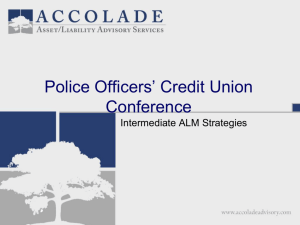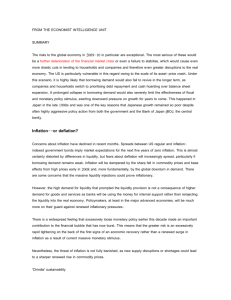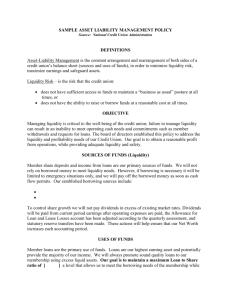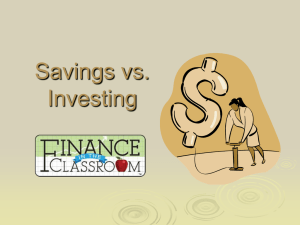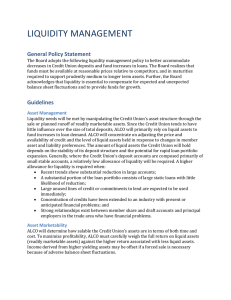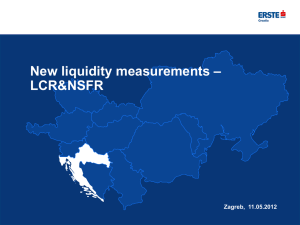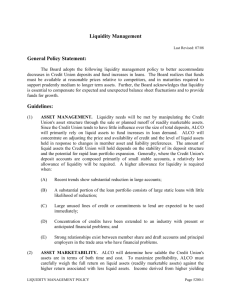Money and Financial Markets
advertisement
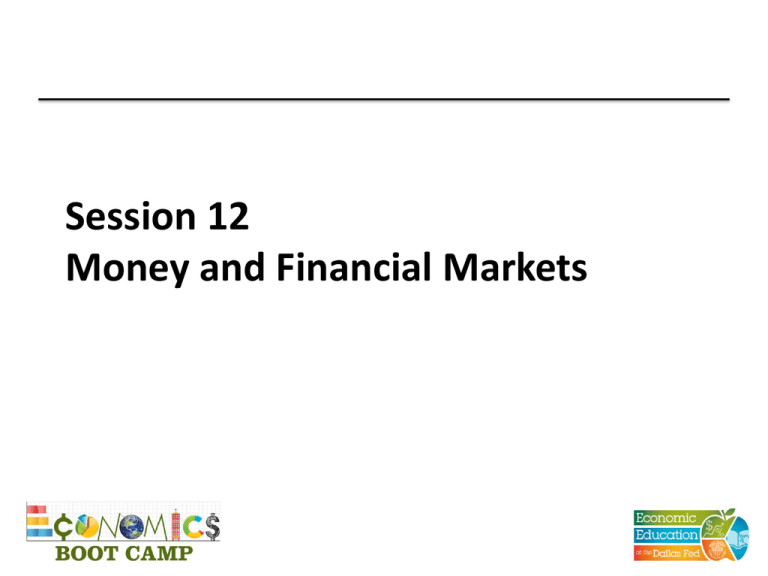
Session 12 Money and Financial Markets TEKS (12) Economics. The student understands the role of money in an economy. The student is expected to: (A) describe the functions of money; (B) describe the characteristics of money, including commodity money, fiat money, and representative money; and (C) examine the positive and negative aspects of barter, currency, credit cards, and debit cards. TEKS (17) Personal financial literacy. The student understands the role of financial markets/institutions in saving, borrowing, and capital formation. The student is expected to: (A) explain the functions of financial institutions and how they affect households and businesses; (B) explain how the amount of savings in an economy is the basis of capital formation; (C) analyze the role of interest and risk in allocating savings to its most productive use; and Teaching the Terms • • • • • Commodity money Fiat money Representative money Liquidity Default Problems with barter • Inefficient • Time consuming • Difficult to satisfy wants and needs consistently Functions of Money Unit of account Store of value Medium of exchange Sources of Money’s Value • Commodity Money – medium of exchange has intrinsic value • Representative money – medium of exchange represents a claim on an item of value • Fiat Money – medium of exchange has value by government decree Characteristics of Money • • • • • • Portable Durable Divisible Uniform Limited Acceptable What is the difference? Monetary Aggregates Currency and coins Checkable deposits Traveler’s checks M1 Monetary Aggregates M1 Savings accounts Time deposits <$100K Money Market Mutual Funds M2 Liquidity • Ability to convert an asset to a medium of exchange without loss of value • Factors that affect liquidity include – – – – Time constraints Withdrawal restrictions Minimum deposits Market conditions • When liquidity decreases, savers demand compensation (interest) Money Credit Cards Credit cards represent a loan. The card (or the number) is simply a way to access a line of credit. On the other hand, a debit card is a way to spend checkable deposits, just like a paper check. Financial Markets Savers Financial Intermediaries Financial Markets Direct Finance Indirect Finance Borrowers Types of Financial Intermediaries • • • • Banks, savings and loans, credit unions Mutual funds Life insurance companies Pension funds Benefits of Financial Intermediaries • Reduce transaction costs by gathering and providing information • Reduce risk by allowing diversification • Increase liquidity Risks of Saving or Lending • Default The saver might not be repaid (either the original amount or the promised interest) • Liquidity How quickly can the saver access the money? • Inflation The interest rate might be less than the rate of inflation Trade-offs Default risk Return Trade-offs Liquidity Return Inflation Risk • A student has saved $100 to buy an iPod, but she faces a choice – Buy it today – Loan the money to a friend for one year and buy her iPod when the loan is repaid • Why would she wait? She wants an interest payment that will allow her to buy six $1 song downloads. Inflation Risk • Loan details – Loan amount = $100 – Nominal interest rate = 6% • $100 iPod → $6 interest = 6 downloads • $104 iPod → $6 interest = 2 downloads – Nominal interest rate = 6% – Real interest rate = 2% Questions?

